Here are some photographs of the details of the Bella miniature wooden panel painting - Hover the mouse over the image to see the text details or click here to go to the paintings stats page.
| The actual painting is only 73mm x 99mm and is on Italian poplar wood. This means that unless you are viewing it on a mobile phone, you are almost certainly looking at an enlargement of the original painting. One thing that I have found when showing people a laser print of the image at the true size is that they assume that it is easy to make one of these because the mindset of today is that you just print it out at a different size - forgetting that you actually have to paint the thing at the size that it will finally appear. So, bearing that in mind . . . |
 |
The whole painting -
'Bella' - Ætatis Suæ vij. Anno domini mmxvj (Age seven, 2016AD) - Ginger and white female cat (unusual as ginger cats are almost always male although she does have quite a cobby face for a female) wearing traditional 15th century Netherlands headdress and blue and gold brocade top with white fir and ermine trim to cuffs and collar. |
|
|
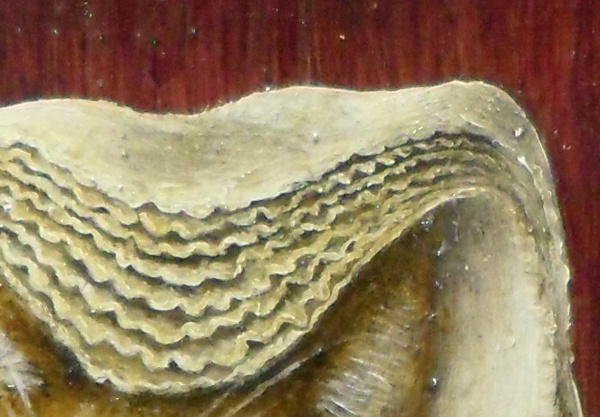 |
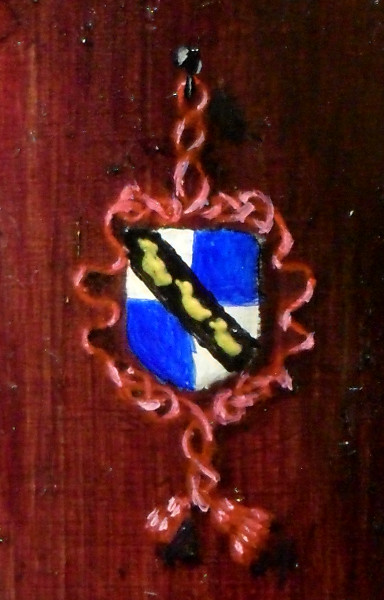 |
| Details of the headdress. Normally women would have five layers of linen in one of these but Johannes Van Eyck painted his wife with one with seven layers in it and I'm certain that Bella knows that she is even more important than that so Bella's has eight layers. At their widest, they are only around 1mm apart on average in the actual painting. |
This is the coat of arms in the top right. The shield is only around 5mm across and the ducks are around 1.5mm from the tip of the beak to the end of the tail. Painting something as small as this was particularly interesting because it brought together a number of limiting factors: there is a limit as to how fine the end of a mormal 'OOO' miniature paint brush is; the paint needs to obscure the colour it is on - in this case, yellow needed to obscure black so a fair amount of opacity was needed from such a small volume of paint; at that scale, the amount that your hand shakes becomes significant although, it has to be said, you get used to it and your abilities become increasingly fine-tuned; and, if you are going to add another layer for extra opacity, you need to aim pretty accurately. |
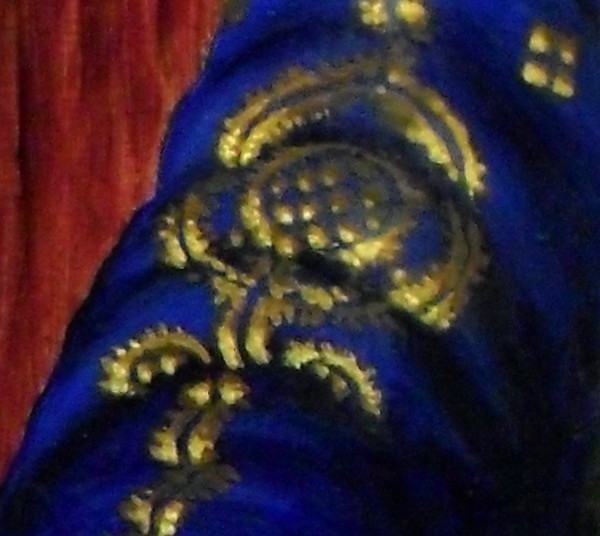 |
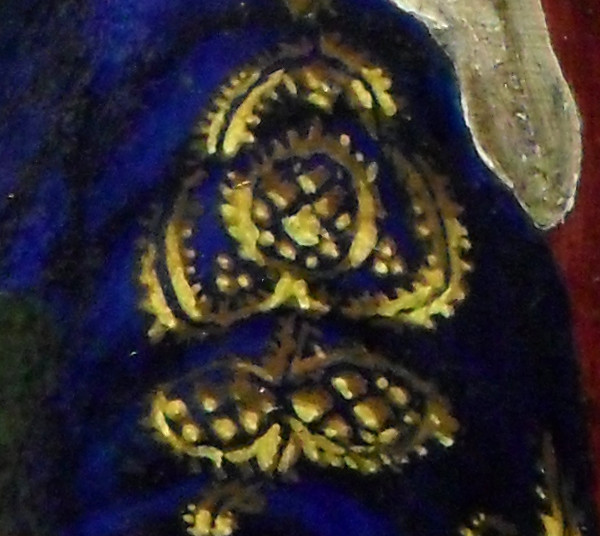 |
| Close-up of the blue and gold brocade on the top of her right sleeve. On the left hand side, you can see the grain of the wood in the background (the wood that I have painted - the support surface for the actual painting, the Italian poplar is buried under layers of gesso and oil paint). |
Detail of the blue and gold brocade on the top of her left sleeve. As was often the case, the material that made the clothes was cut so that patterns were symmetrical. At the top, you can see the end of the fine linen headdress hanging down. |
 |
 |
| Close-up of the red choker which is roughly 1.5mm wide - the pattern on it being less than 1mm wide. On the left, you can see the ermine trim with a few stray hairs painted in. |
This image is the same area as the photograph on the left but it is illuminated by ultraviolet light (UV). There is enough energy in the uv to make some of the molecules in the paint fluoresce. These are in the zinc that is added by the paint supplier to the white pigments used and also the Rose Madder which fluoresces orange in the choker. The rusty orange that you can see in the fur is the fluorescence of the zinc compounds in the underlayers being filtered down to orange by the transparent gold ochre that is used to make the ginger fur gingery. For more on this, look at the Analysis page. |
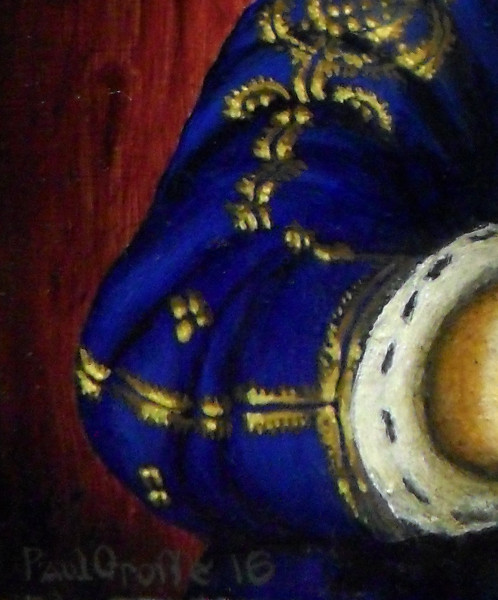 |
 |
| Detail of her right sleeve showing how the tight highlighting on the goldwork on her sleeve makes it look even more gold-like. |
For such a small painting, a thin frame would not look right so this one has a relatively large frame with a gold-leaf inner, oak frame. |